#queen arsinoe II
Explore tagged Tumblr posts
Text
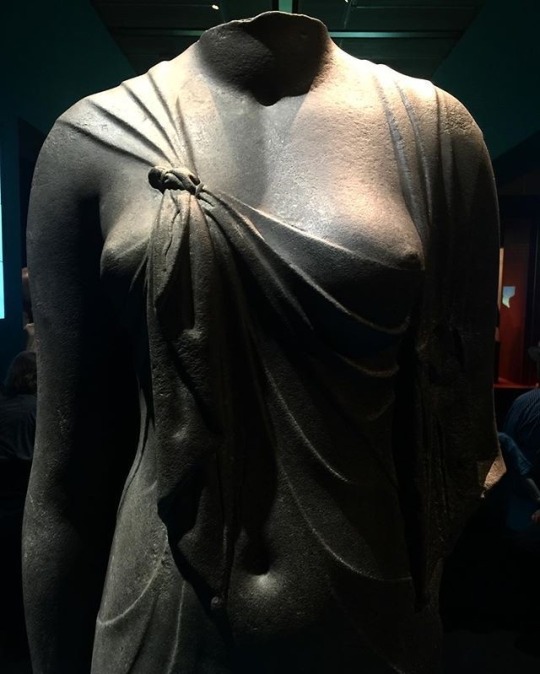
Statue of Queen Arsinoe II identified as the goddess Isis. Ptolemaic Period (305-330 BC)
Black granite, from Canopus. Now in the Bibliotheca Alexandrina Antiquities Museum.
111 notes
·
View notes
Text
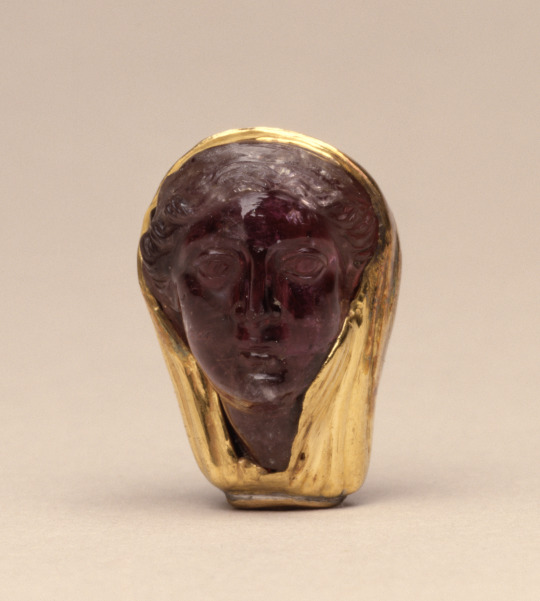
Amethyst carving of Queen Arsinoe II set in a gold mount, Ptolemaic Egypt, 3rd century BC
from The Walters Art Museum
1K notes
·
View notes
Text

Queen Arsinoe II (278–270 BCE) - granodiolite - 150 cm high - Ptolemaic Period, 305-30 BCE
The eldest daughter of Ptolemy I. She married her brother Ptolemy II (285–246 BC), her junior by eight years. He proclaimed himself Philadelphus, ‘he who loves his sister’, and she became Philadelphia, ‘she who loves her brother’. Both were to become ‘the Philadelphic gods’.
Ptolemy II promoted the worship of his sister-wife after her death in 270 BCE. Worshipped by Egyptians and Greeks alike, she was became part of Egyptian cult and temples, and was often identified by Egyptians as Isis, the mother goddess and a patron of magic. As the mistress of the seas, Arsinoe II also enjoyed a specific type of apotheosis: she was Aphrodite incarnate. This sculpture was located in a temple within the city of Canopus.





24 notes
·
View notes
Photo

Amastris
Amastris (c. 340/39-285 BCE) was a niece of the Persian king Darius III (r. 336-330 BCE) through her father Oxyathres. She was married in succession to Alexander's general Craterus, the tyrant Dionysius of Heraclea, and finally to Lysimachus of Thrace. She founded an eponymous city in Paphlagonia and was the first queen to issue coins in her own name. Amastris was the mother of four children, was supposedly divorced so that Lysimachus could marry Arsinoe II, and was allegedly murdered by her sons for interfering in their affairs. Despite their divorce, Lysimachus still avenged her death by killing her sons. Scholars have mostly ignored Amastris and left the few known details of her life as contradictory as the ancient sources present them. Yet, the little-known queen is arguably the first true Hellenistic queen as she embodies the entanglement of Persian and Greco-Macedonian traditions.
The Last Achaemenid Princess
As the daughter of prince Oxyathres, the brother of the last Persian king Darius III Codomannus, Amastris was in effect the last surviving Achaemenid princess. Although her mother is unknown, the only woman associated with her father is an Egyptian concubine called Timosa. After the Battle of Issus (333 BCE), Alexander the Great found Amastris among the other royal and noble women. During the grand wedding ceremony at Susa almost a decade later (324 BCE), when the Macedonian high commanders were married to Persian and Median women, Alexander gave Amastris to his general Craterus – the only companion besides Hephaestion to wed a Persian princess. Historians maintain that Craterus, famously devoted to Macedonian tradition, repudiated Amastris in order to marry Phila, the daughter of the Macedonian regent Antipater. As Macedonian royalty and nobility practiced polygamy, Craterus did not have to separate from one wife to marry another. Craterus, at any rate, would soon fall in battle (321 BCE).
Continue reading...
20 notes
·
View notes
Text

Amethyst head wrapped in gold, of Arsinoë II, Queen of Ptolemaic Egypt, c. 300 B.C.
Arsinoë II was a Queen of Ptolemaic Egypt, who also held the Egyptian titles of King of Upper & Lower Egypt, making her pharaoh.
Walters Art Museum, Baltimore. 42.190
Read more: https://egypt-museum.com/amethyst-head-of-arsinoe-ii-queen-of-ptolemaic-egypt/
25 notes
·
View notes
Text

Queen Arsinoe II. Ptolemaic Period, ca. 305-30 BC. Black granite, from Canopus. Height: 150 cm; Width: 55 cm; Depth: 28 cm. Now in the Bibliotheca Alexandrina Antiquities Museum.
2 notes
·
View notes
Text
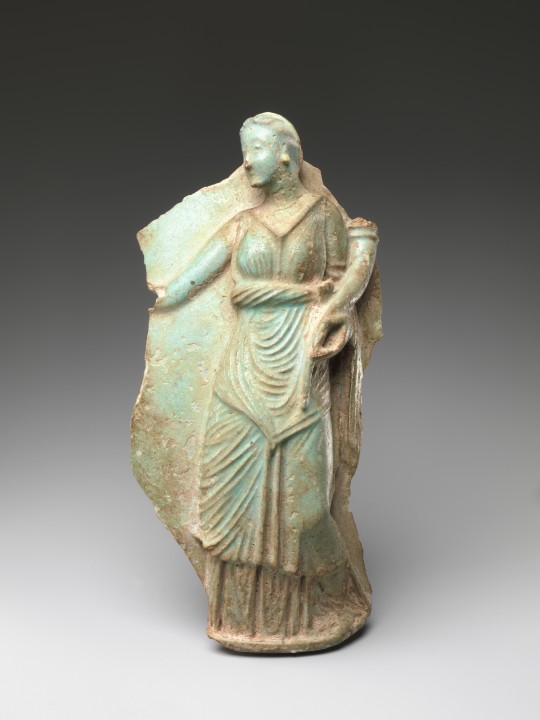
Fragment of a Vase Depicting Berenike II - Met Museum Collection
Inventory Number: 26.7.1016 Ptolemaic Period, 246–221 B.C. Location Information: From Egypt, Alexandria region; Probably from Alexandria
Description:
Ptolemaic oinochoai (wine-jugs) with portraits of the queens were libation vessels associated with the royal cult, most likely with the Arsinoeia, the festival established in honor of Arsinoe II.
#Fragment of a Vase Depicting Berenike II#berenike II#ptolemaic#alexandria region#alexandria#met museum#26.7.1016#womens clothing#PWC#lower egypt
5 notes
·
View notes
Text
Cleopatra's Heritage
Her name means “father’s glory,” in the sense of “glorious lineage” (from the Greek κλέος, kleos, “glory,” and πατρóς, patros, “of the father”). Cleopatra isn’t actually Egyptian, but Greco-Macedonian.

Although we perceive her name as unique in history and belonging to an equally unique queen, she was not the only one to be called that. We know of six others preceding her, which is why, to avoid any confusion, modern historians refer to her as Cleopatra VII. Why were there so many Cleopatras? The reason is that it was customary among the Ptolemies to use recurring dynastic names (like the French kings did with Louis).
Consequently, the princesses invariably had one of these three names: Arsinoe, Berenice, or Cleopatra.
Cleopatra’s Egypt was very different from what we all imagine. There are respectively 1,200, 1,300, and more than 1,400 years between her and other famous Egyptian women such as Nefertari (Pharaoh Ramesses II’s wife), Nefertiti (Pharaoh Akhenaten’s wife), and Hatshepsut. It’s like comparing a modern woman with one who lived at the time of Charlemagne or the early-medieval Lombards.
Cleopatra lived in a completely different Egypt, a kingdom already invaded and ruled by Persians for quite a few centuries before being conquered by Alexander the Great, who then started the Greco-Macedonian Ptolemaic dynasty that remained on the throne for another three centuries or so.
Source: Cleopatra - The Queen who Challenged Rome and Conquered Eternity by Alberto Angela
#cleopatra#antony and cleopatra#ancient egypt#ptolemaic egypt#egyptian history#ptolemaic dynasty#queen cleopatra#book quotes
10 notes
·
View notes
Text
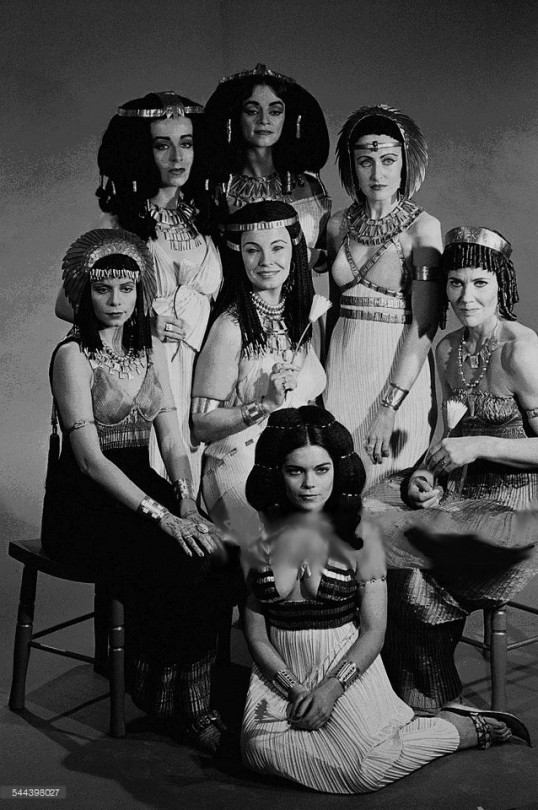
Female cast members of the BBC television drama series "The Cleopatras" pictured together in Ancient Egyptian period costume in London on 29th November 1982. Clockwise from top rear: Sue Holderness (Cleopatra IV), Pauline Moran (Cleopatra Berenike), Caroline Mortimer (Cleopatra Thea, Queen of Syria), Francesca Gonshaw (Arsinoe IV), Michelle Newell (Cleopatra III + Cleopatra VII, here she’s in costume as Cleopatra VII), Amanda Boxer (Cleopatra Tryphaena, Queen of Syria), and Elizabeth Shepherd (Cleopatra II) (center).
#The Cleopatras#TV#Sue Holderness#Pauline Moran#Caroline Mortimer#Francesca Gonshaw#Michelle Newell#Amanda Boxer#Elizabeth Shepherd
3 notes
·
View notes
Text



HEAD of a Ptolemaic Queen: Greek-Hellenistic from Ephesus [theatre] Ephesian marble 3 BC.
"The larger than life-sized head of a woman was originally inserted into the statue of a cloaked figure. Traces of workmanship on the back of the head and the neck are often found on Hellenistic sculpture… …Traces of a tiara identify the sitter as a Hellenistic [presumably Ptolemaic] queen, possibly Arsinoe III Philopator, Queen of Egypt [246-204 BC]." [Txt ©EMV KHM, Vienna]
Ephesos Museum, Vienna | EMV KHM • Web : https://www.khm.at/en/visit/collections/ephesos-museum • FB : https://www.facebook.com/KHMWien • IG : @kunsthistorischesmuseumvienna
EMV KHM | Michael Svetbird phs©msp | 13|08|23 6300X4200 600 [I.,II.] The photographed object is collection item of EMV KHM, photos are subject to copyrights. [non commercial use | sorry for the watermarks]
📸 Part of the "HEADS.Sculpture" MSP Online Photo-gallery:
👉 D-ART: https://www.deviantart.com/svetbird1234/gallery/78520831/heads-sculpture
👉 FB Album: https://www.facebook.com/media/set?set=a.1400262423675664&type=3
.
#vienna#ephesus#ephesos#museum#archaeological museum#kunsthistorisches museum#kunsthistorisches museum wien#hellenistic#ptolemaic#ancient greece#ancient sculpture#sculpture#ancient art#head#heads#queen#arsinoe#antiquity#ancient#archaeology#heritage#museology#art history#antiquities#photo gallery#art photography#archaeology photography#sculpture photography#museum photography#michaelsvetbird
2 notes
·
View notes
Text
Cleopatra
Queen of the Ptolemaic Kingdom of Egypt

The Berlin Cleopatra, a Roman sculpture of Cleopatra wearing a royal diadem, mid-1st century BC (around the time of her visits to Rome in 46–44 BC), discovered in an Italian villa along the Via Appia and now located in the Altes Museum in Germany.
Cleopatra VII Thea Philopator was Queen of the Ptolemaic Kingdom of Egypt from 51 to 30 BC, and its last active ruler. A member of the Ptolemaic dynasty, she was a descendant of its founder Ptolemy I Soter, a Macedonian Greek general and companion of Alexander the Great.
Born: January 69 BC, Alexandria, Egypt

The Death of Cleopatra (1658), by Guido Cagnacci
Died: August 30 BC, Alexandria, Egypt
Spouse: Ptolemy XIII Theos Philopator (m. 50 BC��48 BC), Mark Antony (m. 32 BC–30 BC), Ptolemy XIV Philopator (m. ?–48 BC)
Children: Cleopatra Selene II, Caesarion, Alexander Helios, Ptolemy Philadelphus
Parents: Ptolemy XII Auletes, Cleopatra V
Siblings: Ptolemy XIII Theos Philopator, Ptolemy XIV Philopator, Arsinoe IV, Berenice IV
Grandchildren: Ptolemy of Mauretania, Drusilla of Mauretania the Elder, Julia of Mauretania

Cleopatra DENIED
I mean, can you blame him? Look at that smile!
12K notes
·
View notes
Text


Statue of Queen Arsinoe II Ptolemaic Period, ca. 305-30 BC. Cairo Egypt Museum Bibliotheca Alexandrina Antiquities Museum
Statue of Queen Arsinoe II identified with Isis, mother goddess and patron of magic. It is considered one of the masterpieces of Ptolemaic sculpture, which combines Greek and Egyptian elements.
The statue is in a traditional Egyptian striding pose. She stands facing forward with her arms lowered along the sides of the body and her left foot forward. Greek influence is evident in the contrast between the covered and bare areas of the chest and the shape of the folds of her transparent garment, which shows the beauty of the smooth body.
The body shape is in the Greek style, based on the details in the abdomen, chest, and legs, which are all soft and rounded. The statue is smooth and well polished. This exceptional sculpture stood in a temple at the city of Canopus.
The dress provides more clues about the identity of the subject: the handling of fabric recalls the marble work of Hellenistic artists showing Aphrodite in “wet drapery”. The folds actually undress the figure more than they dress it. According to the legend, Aphrodite was born from the foaming seas on the south coast of Cypress. One is immediately reminded of the queen who was considered as the earthly manifestation of Aphrodite – Arsinoë II, wife of Ptolemy II.
Found in the undersea remains of the ancient Egyptian city of Heracleion is hoisted onto a boat off the coastal town of Abu Qir, 24 kms east of Alexandria, 03 June 2000. A team of divers led by French underwater archaeologist Franck Goddio discovered the treasures that date back to the Pharaohs, Greeks, Romans and early Muslims during two years of exploration and excavation.
Arsinoe seems to have been a genuinely popular goddess throughout the Ptolemaic period, with both Greeks and Egyptians, in Egypt and beyond. ‘Arsinoe’ is one of the few Greek names to be naturalised as an Egyptian personal name in the period. Altars and dedicatory plaques in her honour are found throughout Egypt and the Aegean, while hundreds of her faience oenochoae have been found in the cemeteries of Alexandria.
Dal sito del museo
1 note
·
View note
Photo
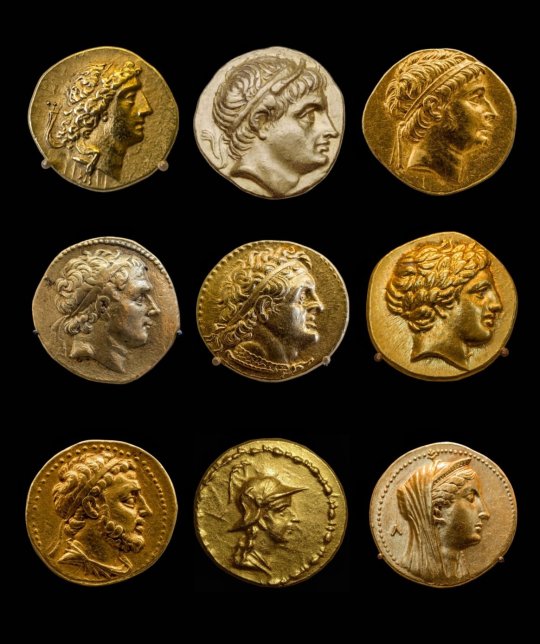
Ancient Greek gold coinage.
Hellenistic Kings and Queens ruled an area from Greece in the west till India in the east.
From left to right:
1) King Asandros, Kingdom of Bosporos/Pontos (Black Sea region), 36 BC
2) King Demetrius I Poliorketes, Kingdom of Macedonia, 3rd BC
3) Seleukos II, Seleucid Empire, 3rd BC
4) Antiochos III o Megas (the Great), Seleucid Empire, 3rd-2nd BC
5) King Ptolemaios II, Kingdom of Egypt, 3rd BC
6) King Alexandros IV (the young Prince/Son of Alexander the Great), Kingdom of Macedonia, 323-315 BC
7) King Achaios (usurpator), Seleucid Empire, 220-213 BC
8) King Menander I Soter, Kingdom of Indo-Greeks (appr. modern Afghanistan -parts of India), 165-130 BC
9) Queen Arsinoe II, Kingdom of Egypt, 283-246 BC.
#art#design#coin#gold#style#history#greek#king#queen#hellenistic#king asandros#king demetrius#seleukos II#achaios#arsinoe#alexandros IV#macedonia#seleucid#ptolemaios#menander I#india#afghanistan#egypt#archeology
277 notes
·
View notes
Photo

Ptolemy II Philadelphus
Ptolemy II Philadelphus ("The Sibling Loving", r. 282-246 BCE) was the second ruler of the Ptolemaic Dynasty. He consolidated the kingdom conquered by his father Ptolemy I and presided over its golden age. Ptolemy II invested heavily in Alexandria, overseeing the completion of the Library of Alexandria and the Lighthouse of Alexandria, one of the Seven Wonders of the Ancient World.
Ptolemy II ruled through a combination of hard and soft power, influencing some states through diplomacy while funneling resources toward wars against his rivals in Africa, Asia, and Greece. The Ptolemaic kingdom reached its furthest extent during his reign. These efforts were funded by economic policies that increased Egypt's agricultural and financial output. With his sister-wife Arsinoe II Philadelphus, he instituted a cultural and religious program that solidified the Ptolemaic Dynasty as Egypt's divine rulers.
Youth & Succession
Ptolemy II was born in Kos in 308 or 309 BCE to Ptolemy I and Berenice I of Egypt, his third wife. Ptolemy II had a full-blooded sister, Arsinoe II (l. c. 318/311 to c. 270/268 BCE), and several half-siblings, many of whom were destined to rule themselves. On his father's side, his half-brothers Ptolemy Keraunos (also spelled Ceraunus, r. 281-279 BCE) and Meleager (r. 279 BCE) were each briefly king of Macedon, and his half-sister Lysandra was queen consort to Alexander V of Macedon (r. 297-294 BCE). On his mother's side, his half-brother Magas (r. 276-250 BCE) was king of Cyrene, and his half-sister Antigone was queen consort to Pyrrhus (c. 319-272 BCE).
Shortly after his birth, Ptolemy II and the rest of his family relocated to Alexandria, Egypt's capital. As a youth, Ptolemy II was tutored by some of the brightest minds of Greek literature and Greek philosophy, including Philetas of Cos (c. 340 to c. 385 BCE), Zenodotus of Ephesus (c. 325-260 BCE) the first head of the Library of Alexandria, and Strato of Lampascus (c. 340/330-269 BCE), director of the Lyceum. This educational background contributed to his patronage of the Library of Alexandria later in life.
Ptolemy I decided to pass over Ptolemy Keraunos, his firstborn son by his previous wife Eurydike, so that Ptolemy II could become regent. This decision may have been motivated by Berenice, who naturally wanted her own son to rule. Ptolemy II became co-ruler with his father around 284 BCE. This decision was contested by prominent figures in the Alexandrian court like Demetrius of Phalerum (c. 350-280 BCE), who supported the claims of Ptolemy I's older sons by Eurydike.
Upon Ptolemy I's death in 282 BCE, Ptolemy II became ruler of Egypt, Cyrene, Coele-Syria, Phoenicia, and Cyprus. Ptolemy II immediately set about strengthening his claim by removing all those who refused to acknowledge his rule. He executed two of his half-brothers who attempted to usurp him or stir up rebellion. Demetrius of Phalerum was exiled to Upper Egypt, where he died. Over the course of his reign, Ptolemy II would face challenges from his other brothers. However, Ptolemy Keraunos ended up relinquishing his claim to the Egyptian throne after attaining the Kingdom of Macedon in 281 BCE.
Continue reading...
24 notes
·
View notes
Photo

Statue of Arsinoe II
The Vatican Museums
#arsinoe ii#sculpture#statue#art#egypt#egyptian#ancient egypt#vatican#vatican museums#vatican museum#museum#rome#italy#europe#travel#my photos#queen
33 notes
·
View notes
Photo

2018 Egypt and the Classical World by Anthony Huan (who is a saint and also uploaded the label) This is Ptolemaic queen Arsinoe II, with her cartouche at right. In the hieroglyphs at left you can see the name of the Apis bull. Part of an exhibition at the Getty Museum, the relief’s usual home is Harvard University’s Sackler Museum.
14 notes
·
View notes